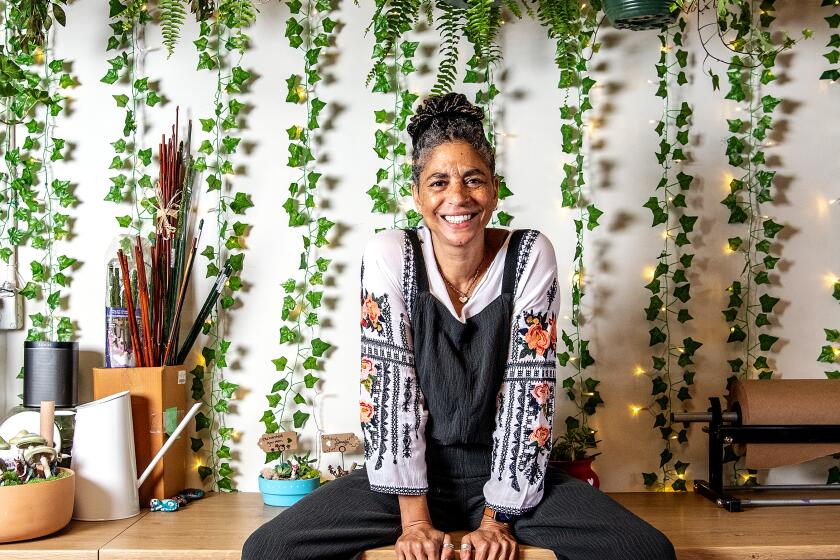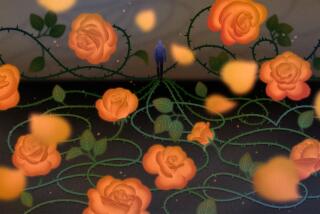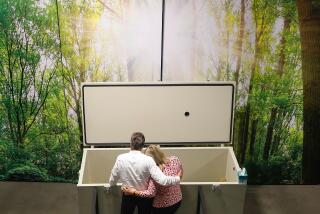I killed my fiddle-leaf fig. But allowing it to die was a lesson in processing grief
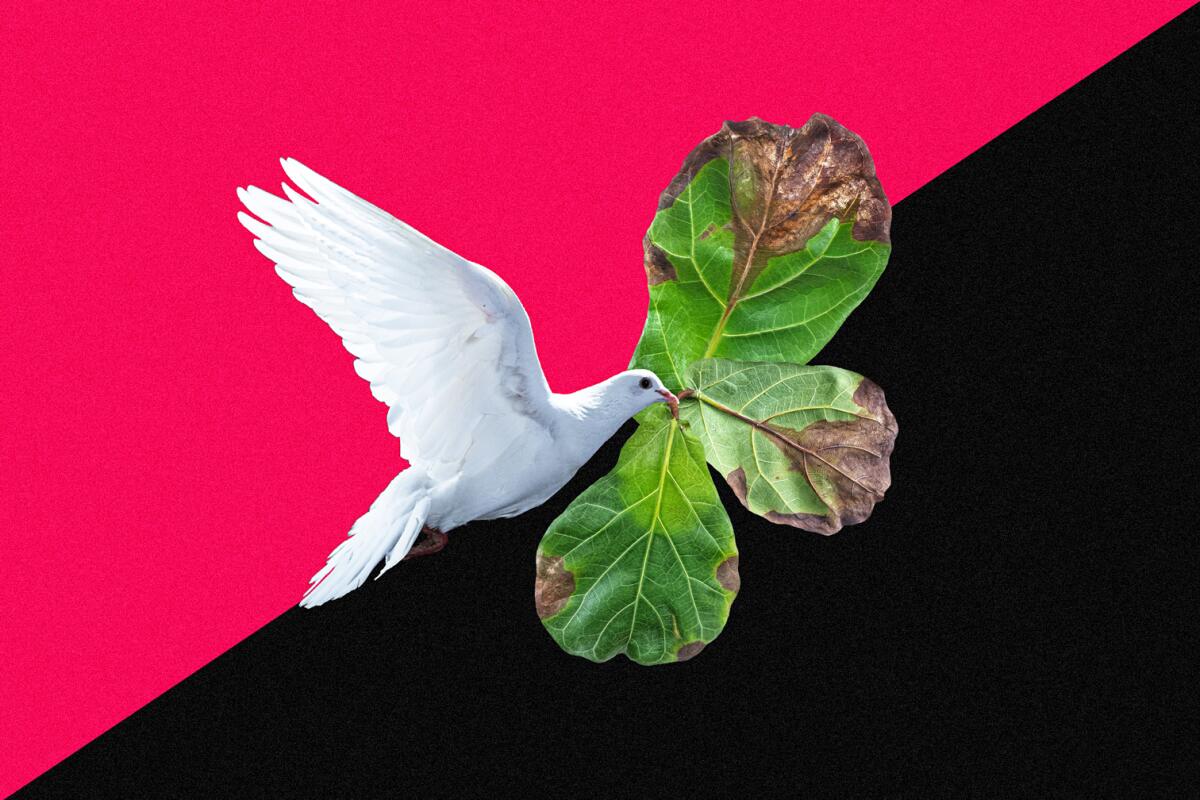
- Share via
My fiddle-leaf fig is dying. As I pick up its brittle, brown leaves off the floor, I apologize aloud (since I have started talking to myself during the pandemic) and recall when it was lush and healthy.
Seven years ago, I splurged and purchased the $95 plant for myself for Mother’s Day, as moms do. I remember listening intently to the nursery staffer’s plant-care tips as she gingerly placed the tall beauty in the back of my car, just as I did when I brought my children home from the hospital.
The statuesque fig transformed the living room of my Hollywood rental with its violin-shaped leaves and softened its unappealing yellow walls. When I moved to a sun-drenched bungalow in Echo Park, the fiddle-leaf was like an old friend in an environment that still felt like someone else’s home. I loved walking into the living room and seeing its greenery against a wall of floor-to-ceiling glass. When the deadly wildfires of 2018 were visible from my hilltop perch, the plant was a reassuring presence as life felt out of control.
I believe, as Justina Blakeney noted in her book “The New Bohemians,” that a home isn’t a home without plants. “Plants breathe life into a room, and they add deep color, bright freshness, and a bold vitality to a space that only something living can bring,” she said. But my fiddle-leaf fig wasn’t happy in its new home. The direct sunlight from the west-facing windows overwhelmed the plant’s once-glossy, puckered leaves and slowly, over a period of several years, it began to degenerate.
While sheltering in place during the pandemic, I needed a distraction, so I focused on the prospect of saving the houseplant. My family dynamic was spiraling. Even with so much uncertainty in the world, my son went off to college in Illinois and my daughter decided to stay in Minneapolis after graduating from college. In addition to worrying about my kids, I now also worried about my mother, who was growing increasingly confused during our weekly visits through the sliding glass door of her nursing home. After months of her being locked inside because of the coronavirus, her dementia accelerated to the point where she didn’t know me. Her eyes looked past me as I tried to reassure her: “The stress of the pandemic has made my brain fuzzy too,” I told her. “I can’t remember anything either.” She had a green thumb at one point in her life. I wished I could ask her how to save my fiddle-leaf fig. I wished I could ask her a lot of things.
When Shawna Christian turned 50, she left her IT job and invested all her money in Tansy, a Burbank plant store. Then the pandemic hit.
“Don’t let it sit in water,” advised my go-to plant expert, Annette Gutierrez, co-owner of the Atwater Village garden store Potted. “If you notice water in the tray or container for too long after you’ve watered, use a turkey baster to get it out.” The Reader’s Digest “Success With House Plants” recommends wiping the leaves with a sponge “regularly to free them of accumulated dust.” Bright light was essential. But it needs to be indirect. “If you have to think too hard about if you have enough light or not, then you don’t have enough light,” added Gutierrez. I jotted down notes on my iPhone to keep track of it all.
If fiddle-leaf figs are so finicky, how does everyone make them look so easy on Instagram and interior design blogs?
I couldn’t control the pandemic, my mom slipping away from me or my children moving on with their lives, but here was something I was supposed to be able to manage. And I was failing.
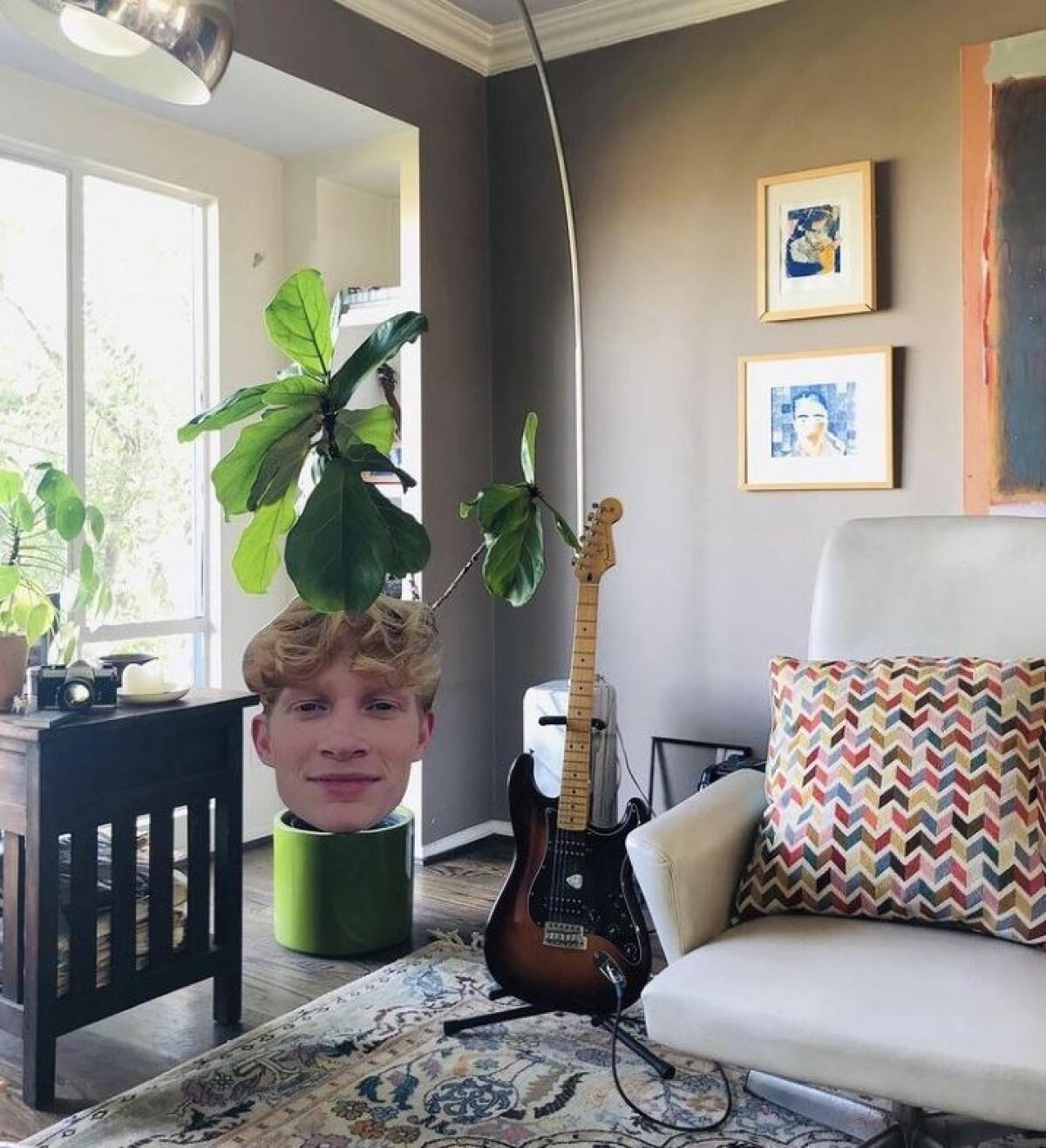
I followed all of the advice. I moved the plant away from the glass. It was still unhappy. I moved it back. I rotated it and fed it liquid fertilizer. I gently wiped its leaves and spritzed them with water. The leaves continued to burn. It was like watching a slow, steady decline, just like my mother.
Scavenging from my son’s drive-by high school graduation ceremony last May — the latest in a series of missed milestones — I took the commemorative Fathead cutout of his face and placed it at the foot of the faltering fiddle-leaf plant as a joke. When I walked into the room, the cardboard face made me smile in a way the plant no longer could. When he left for college in the fall, the fig mocked me as my home felt like the emptiest of nests, emphasized by the slow and methodical drop of every brown, dead leaf.
Despite my efforts, the plant continued to fade and the time came when I said, “I think it’s time to let you go.”
Unexpected things happen when you try to stop the inevitable. I grew angry with myself. Why couldn’t I save this plant? What more could it want? Like a vulnerable tween competing with social media’s distorted beauty standard, I resented when others posted photos of their new leaf growth. Like my mother’s dementia, I wondered how much life was still left in there. Meanwhile, the plant was daring me to let it die. I finally accepted that no matter what I did, I could not keep the plant alive.
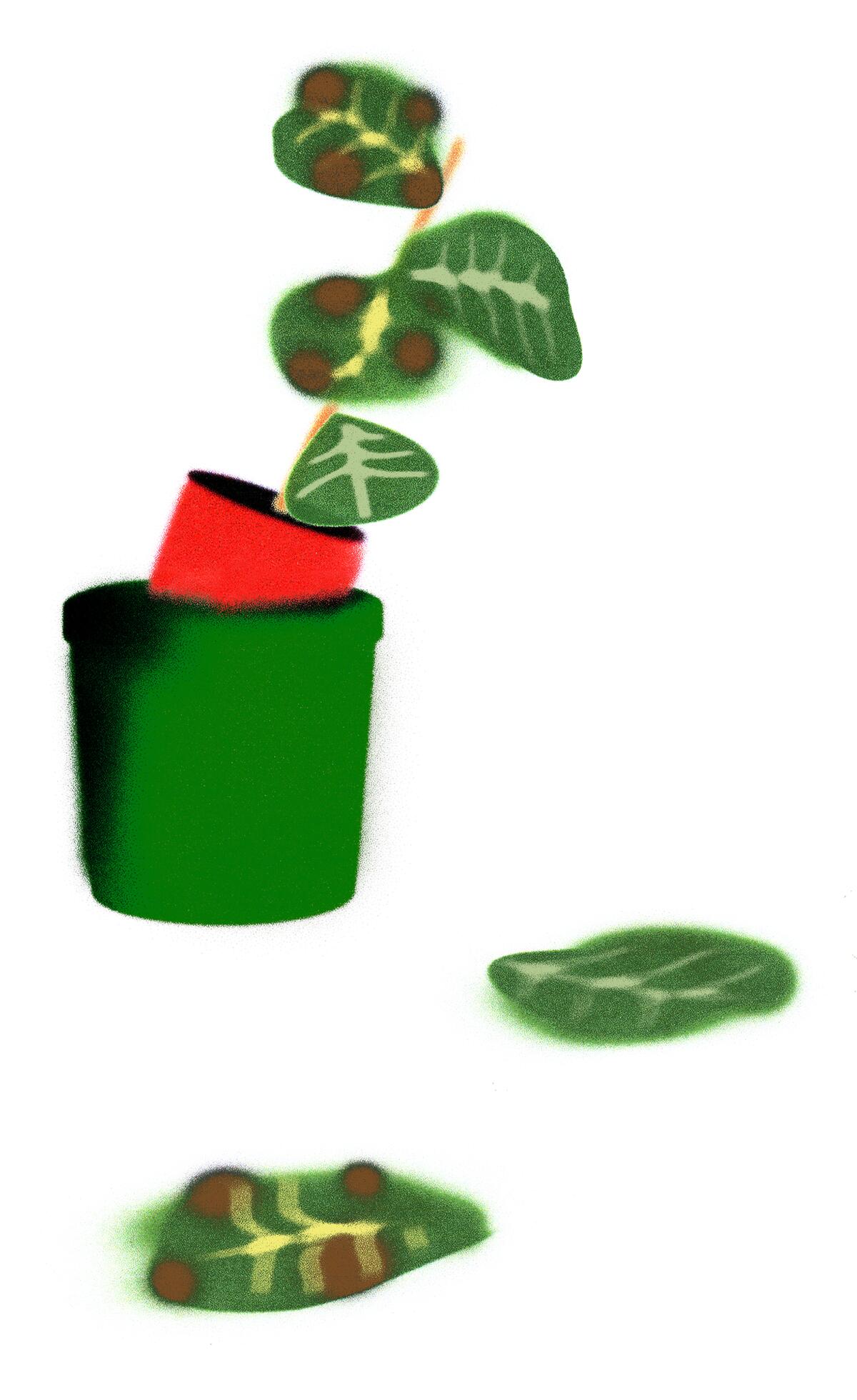
Why did I care? Perhaps I tried so hard because it represented another blow in a long line of losses. My husband’s death from pancreatic cancer 17 years ago. My brother’s shocking death in a car accident last year. My mother-in-law that same year. When a longtime friend died last September, I forwarded his daughter the last email he sent me, where he shared how much he loved being her dad. Like my plant-saving efforts, I wanted to feel like I was doing something.
When my mother died in January, I gave up and stopped watering the plant. Where a single leaf would drop once a month, they now fell in clusters on the hardwood floor. Where it was once a big-leaved tree, it now was a series of empty stems. I couldn’t save the plant, just like I couldn’t stop my children from growing up and moving away, or prevent my mother from dying alone, surrounded by strangers in PPE gear.
Momentarily, I regretted my decision to let the plant die. When I walked into my living room, it felt empty and bare. Just like the impulse to call or text a loved one who isn’t here anymore, I would look to the corner of my living room and expect to see the fiddle-leaf there. But when I dropped the once-dramatic plant in my green bin, it occurred to me that I felt relieved. I no longer had the responsibility of keeping it alive. Throwing the plant away felt like a metaphor for the part of grief that we can let go of, even though it’s never really gone.
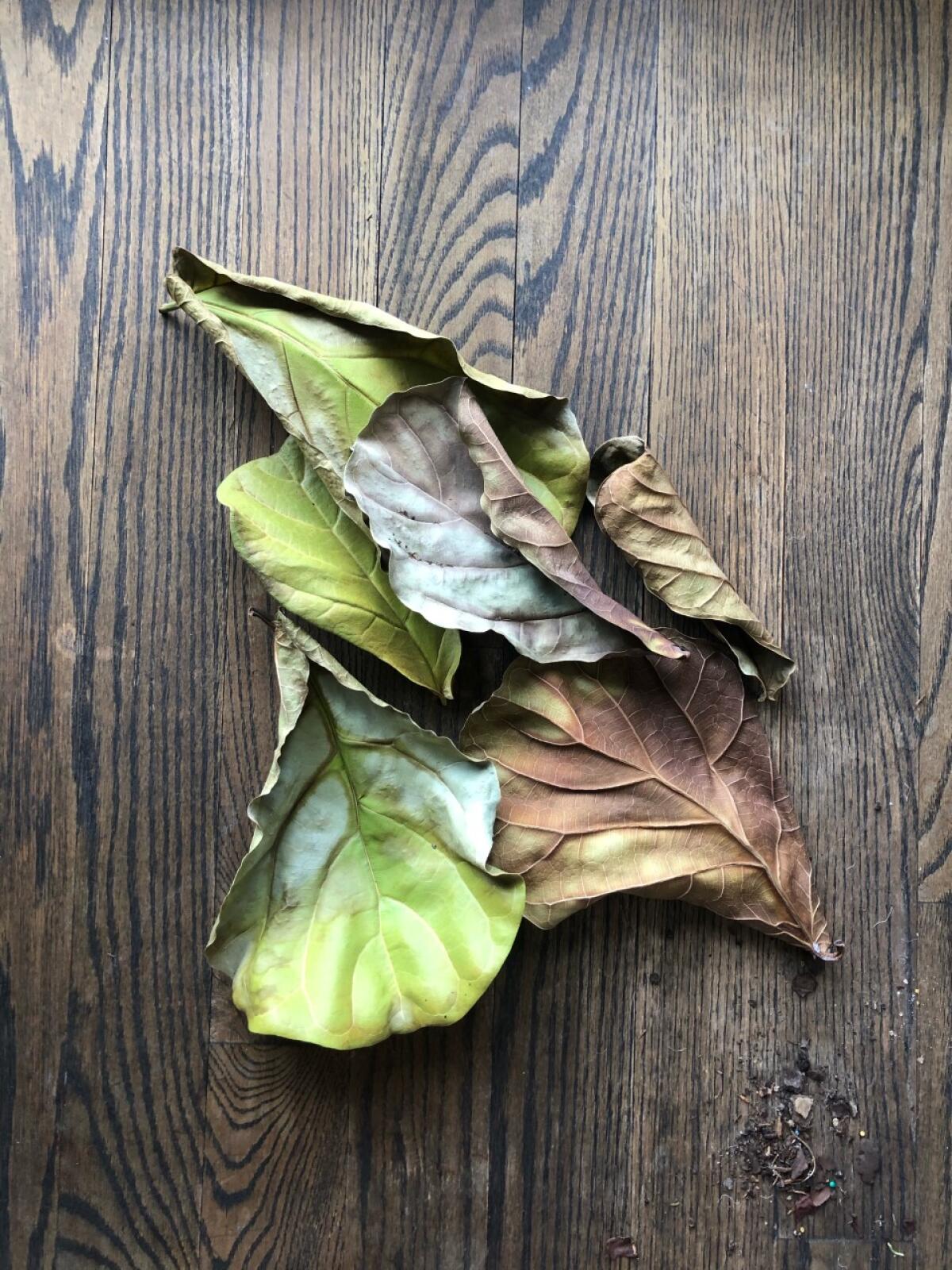
When I remembered its beauty and how happy it made me, I was reminded of my mother’s million-volt smile; my brother standing beside me on the sidelines as he cheered for my son; the feel of my husband’s hand in mine. The pandemic has devastated us and deprived us of the emotional nourishment we get from hugging the people we love but, even in our collective suffering, it can’t steal our memories.
Amid so much loneliness and loss I gave the plant everything it needed — water, light, food, attention and conversation — but it wasn’t enough. And that’s OK. While most people will tell you how to keep a houseplant alive, I’m here to tell you it’s all right to let a plant die. Fiddle-leaf figs are going to continue to thrive, just not in my house.
Moving forward, I’m researching fruitless olive trees. I’m told they can take full sun.
More to Read
Sign up for The Wild
We’ll help you find the best places to hike, bike and run, as well as the perfect silent spots for meditation and yoga.
You may occasionally receive promotional content from the Los Angeles Times.
